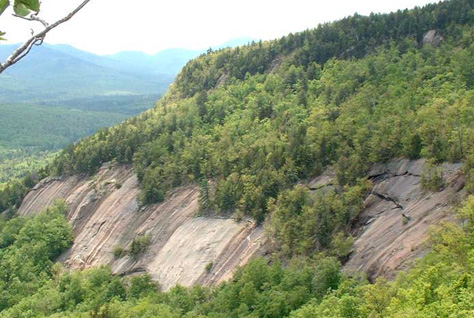Congratulations to the following 2008 Evolving Earth Student Grant recipients:
Breedlovestrout, Renee
University of Idaho
“Paleoenvironmental Studies of the Eocene Chuckanut Basin”
This proposed research will make use of taphonomy, palynology, sedimentology, and stratigraphy to determine the paleoclimate, paleogeography, and paleoenvironment of the Eocene Chuckanut and Huntingdon Formations in northwestern Washington and southwestern British Columbia. Applications of this study will include a greater understanding of the western margin of North America during the Eocene subtropical to temperate climate change, offering new data on global climate change and the impacts on flora and fauna.
Churchill, Morgan
University of Wyoming
“The Paleoecology of Fossil Pinnipedimorpha (Mammalia: Carnivora) in the Northeastern Pacific”
Pinnipeds (seals, sea lions, and walruses) are unique in that they represent an intermediate condition between fully aquatic marine mammals and terrestrial mammals. The study of this group is important to understand the terrestrial to aquatic transition in tetrapods. This study will examine carbon, oxygen and strontium isotopes to assess foraging patterns within extinct pinniped communities in the North Pacific from the early Miocene to the late Pliocene. This study will allow assessment of how modern communities might respond to climate change through past responses pinniped communities made, as well as determine whether modern pinnipeds make an appropriate analog to examine the transition into a marine environment for other mammals.
Collette III, Joseph H.
University of Massachusetts, Amherst
“A new fossil Lagerstratte: Exquisitely Preserved Arthropods from the Cambrian of Wisconsin.”
This project will describe a suite of arthropods from the cambrian of Wisconsin which are preserved in a most unusual manner, ascertain the systematic relationships of these arthropods, link them to a specific trackway ichnogenus and characterize the taphonomic processes responsible from the preservation seen. Ultimately, the cladogram that will be produced may have broader implications in arthropod paleontology.
De La Parra, Felipe
University of Florida
“Finding the Cretaceous-Paleocene boundary event and its consequences on tropical vegetation”
65 million years ago, the impact of an extraterrestrial body with the Earth produced one of the major environmental crises that drastically changed the history of the life on the Earth. This interval is known as the Cretaceous-Paleocene boundary (K-P). The palynological record from mid latitudes show a dramatic and abrupt disappearance of the most dominant taxa and nearly all of the late Cretaceous angiosperms following the boundary, however the effect of this crisis on tropical vegetation is unknown. Not a single section have been studied palynologically on detail from the tropics. This proposal seek funds to find the iridium anomaly associated with the KP boundary event and study the changes in pollen/spore record of a tropical continental section encompassing the KP boundary. The section is located in northern Colombia and my previous palynological work indicate the presence of the boundary within a 10 foot interval.
Dutchak, Alex
The Regents of the University of Colorado
“Paleoclimate and Mammalian Evolutionary Patterns across the Eocene Warm Interval in Northwestern Colorado and Northeastern Utah”
The Eocene Warm Interval (EWI) has been recognized from marine sediments as the peak of a warming episode spanning the Paleocene and Early Eocene epochs. However, the duration of this event has never been studied in continental strata. This project will use Total Organic Carbon (TOC) from sediments and oxygen isotope ratios from mammalian tooth enamel obtained via Laser Ablation to track changes in climate throughout the Wasatchian and Bridgerian North American Land Mammal Ages. When these geochemical datasets are combined with extremely diverse mammalian faunas (14,000+ specimens) from Uinta and Piceance Creek Basins, and all the data are correlated temporally using biostratigraphy, they will provide a better understanding of how large-scale climate fluctuations have affected mammalian evolution and paleoecological organization.
Gilleaudeau, Geoff
University of Tennessee Knoxville
“Investigation of Unusual Breccias in the Mesoproterozoic Atar Group, Mauritania: Tsunami Deposits Related to Extraterrestrial Impact?”
This project will constrain the origin of an unusual breccia in the Mesoproterozoic Atar Group, West Africa. Previous workers have attributed the deposits to seismic activity of cyclic storm-induced loading, but the extreme lateral extent of deposition, along with the amalgamation of multiple stacked subunits and bi-directional clast imbrication suggest deposition by tsunami wave train. The singularity of the breccia interval within >2300 m of Atar Group stratigraphy, as well as its occurrence on the margins of and across a stable craton, suggests a non-seismic origin for tsunami wave energy, such as a marine bolide impact. These hypotheses will be tested using detailed field analysis and comparison with models for tsunami sedimentary transport and deposition. Because Atar breccias also contain unusual fabrics suggestive of viscous flow, these models will integrate date from laboratory precipitation experiments to fully understand fluid transport processes.
Martindale, Rowan
University of Southern California
“Paleoecological patterns of reef death and possible causes for the end Triassic mass extinction”
The end-Triassic extinction is one of the largest and least understood mass extinctions, and is known as the most severe reef crisis in history. Lime Peak (near Whitehorse, Canada) is composed of the youngest Triassic reefs in North America; the last reefs before the end Triassic extinction. The reefs will be visited and analyzed using (a) outcrop sequence stratigraphy and petrography; (b) stable isotope analysis (carbon, oxygen, and nitrogen); and (c) analysis of the diversity, taxonomy, and abundances of contained fossil biota, in order to assess the different biological responses during this interval This multidisciplinary analysis is key to understand what factors controlled the end-Triassic extinction and what caused the reefs to stop growing for several million years. This paleoecological analysis may also assist in identifying general extinction precursors and controls for other extinctions in the fossil record including the cause, severity, and extent of a possible, forthcoming reef extinction.
Neitzke, Lauren C.
Rutgers, The State University of New Jersey
“Orbital Control on Northern Component Water Variations: Can it stand the test of time?”
This study proposes to examine the role between the two proposed mechanisms of variations in deepwater circulation (variations in freshwater input to the high northern latitudes and fluctuations in solar insolation). To do this I will create high-resolution isotopic records from several global deep-water locations. This research will focus on reconstructing changes in deep-water circulation during the middle to late Miocene to test the validity of several hypotheses that are based on late Pleistocene climate reconstructions. This research will provide a further understanding of paleoenvironments and paleoclimates during different intervals in earth’s history.
Tseng, Jack
Natural History Museum of Los Angeles County
“Local timing and faunal dynamics in inner Mongolia during the late Miocene global grassland expansion”
This project will examine the timing of a critical transitional event in Inner Mongolia during the late Miocene – the global expansion of grasslands 8 to 5 million years ago. Inner Mongolia has been chosen as the study focus for its continuous geologic record of the past 65 million years and the 2007 discovery of two new fossil beds close to the age of the global grassland expansion. We will excavate and prospect near the new fossil sites of the central Mongolian Baogeda Ula Formation to improve the macrofaunal record and conduct tooth enamel isotope analysis to pinpoint the global grassland expansion event locally.
Zambito, James
University of Cincinnati
“Did the “Recurrent Hamilton Fauna” Recur or Persist? Developing a Framework for Interpreting Faunal Turnovers”
James Zambito, Carlton Brett, and Gordon Baird
Intervals of paleoecological stability and the extinction events that separate them involve the interplay of ecological, evolutionary, and biogeographic factors. A majority of studies have focused on these patterns, and their underlying processes, intra-basinally at the level of individual species or groups of species with similar environmental tolerances (biofacies). Here, we investigate similar ecological-evolutionary processes in the context of regional turnovers intra- and extra-basinally at the broader, faunal level (unique suites of biofacies related spatially and temporally). Large portions of faunas may be lost when environmental conditions change basin-wide, characterized by the emigration and replacement of most taxa from the spectrum of biofacies for a substantial period of time (at least several kyr). Subsequent immigration and re-establishment of a fauna from extra-basinal refugia when appropriate environmental conditions return is herein termed “faunal recurrence.” On a more confined environmental scale, facies-based outages may occur when a portion of the basin becomes uninhabitable to a previously occupying fauna. These local faunal outages may represent the regional manifestations of global extinction, loss via emigration, or intra-basinal habitat shifting; the latter is termed “faunal persistence”.
Using a high-resolution stratigraphic framework superimposed on an onshore-offshore gradient, we document these different patterns of faunal turnover during the Late Middle Devonian Taghanic Biocrisis in its type area of the New York Appalachian Basin. These include: 1) the loss of the long-ranging Hamilton Fauna and its temporary replacement by the Tully Fauna; 2) the subsequent loss of the Tully Fauna and recurrence of the Hamilton Fauna; and 3) the persistence in nearshore settings of a subset of Hamilton Fauna biofacies while experiencing outage offshore. Recognition of these turnover types suggests that habitat tracking, a process typically attributed to organism lineages, and therefore biofacies, may also operate extra-basinally at the biofacies level, and, moreover, at the broader, faunal level.

